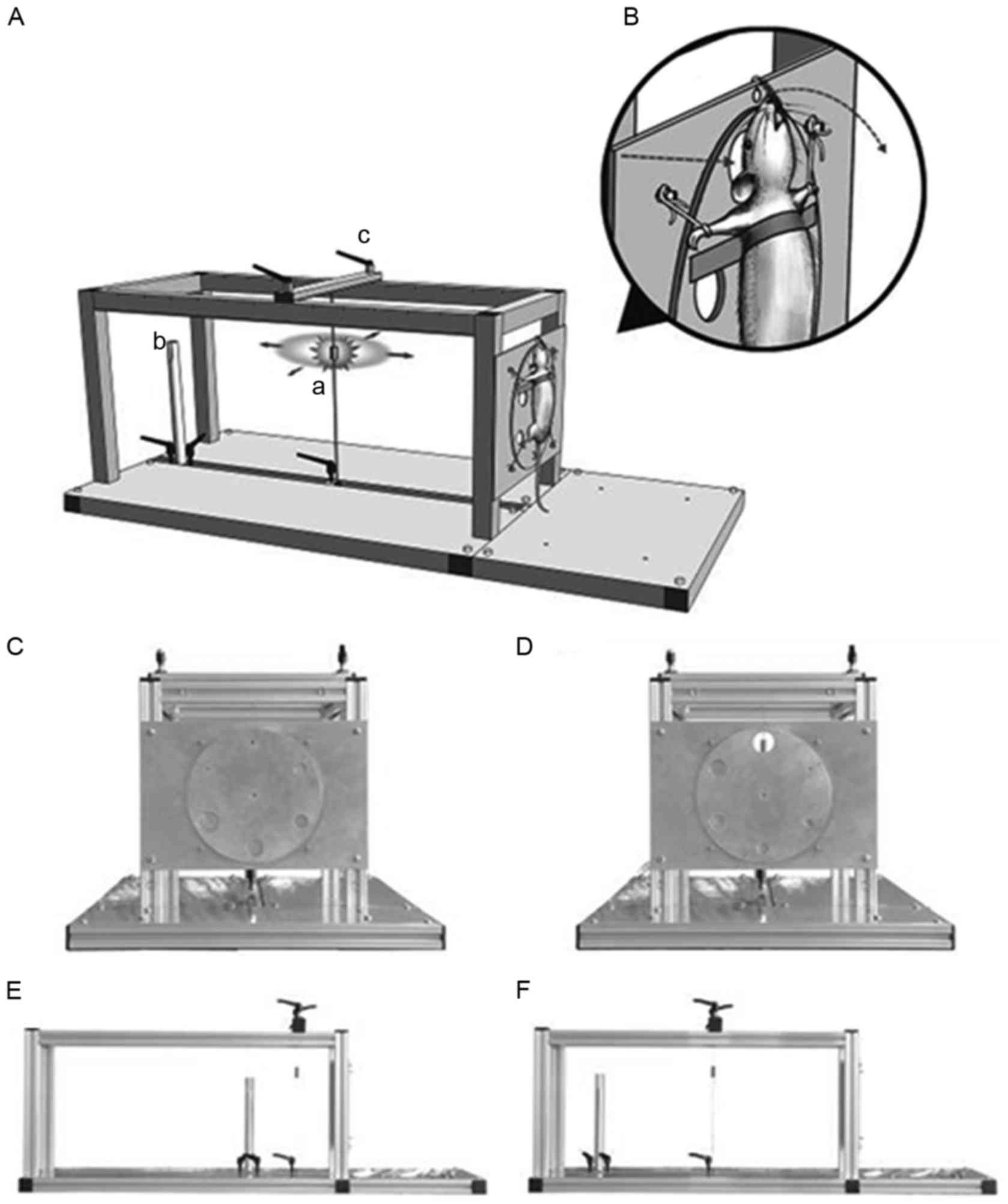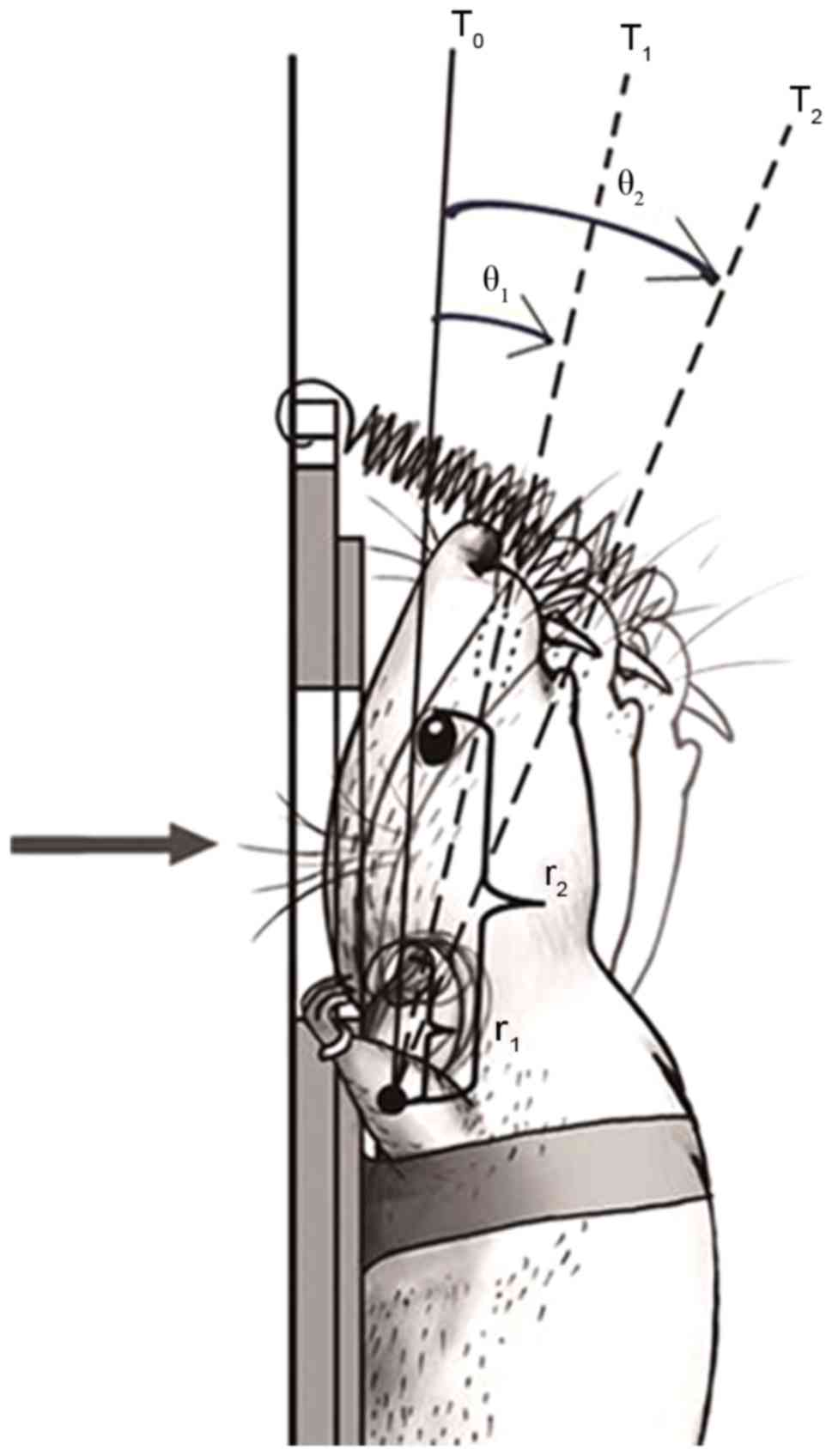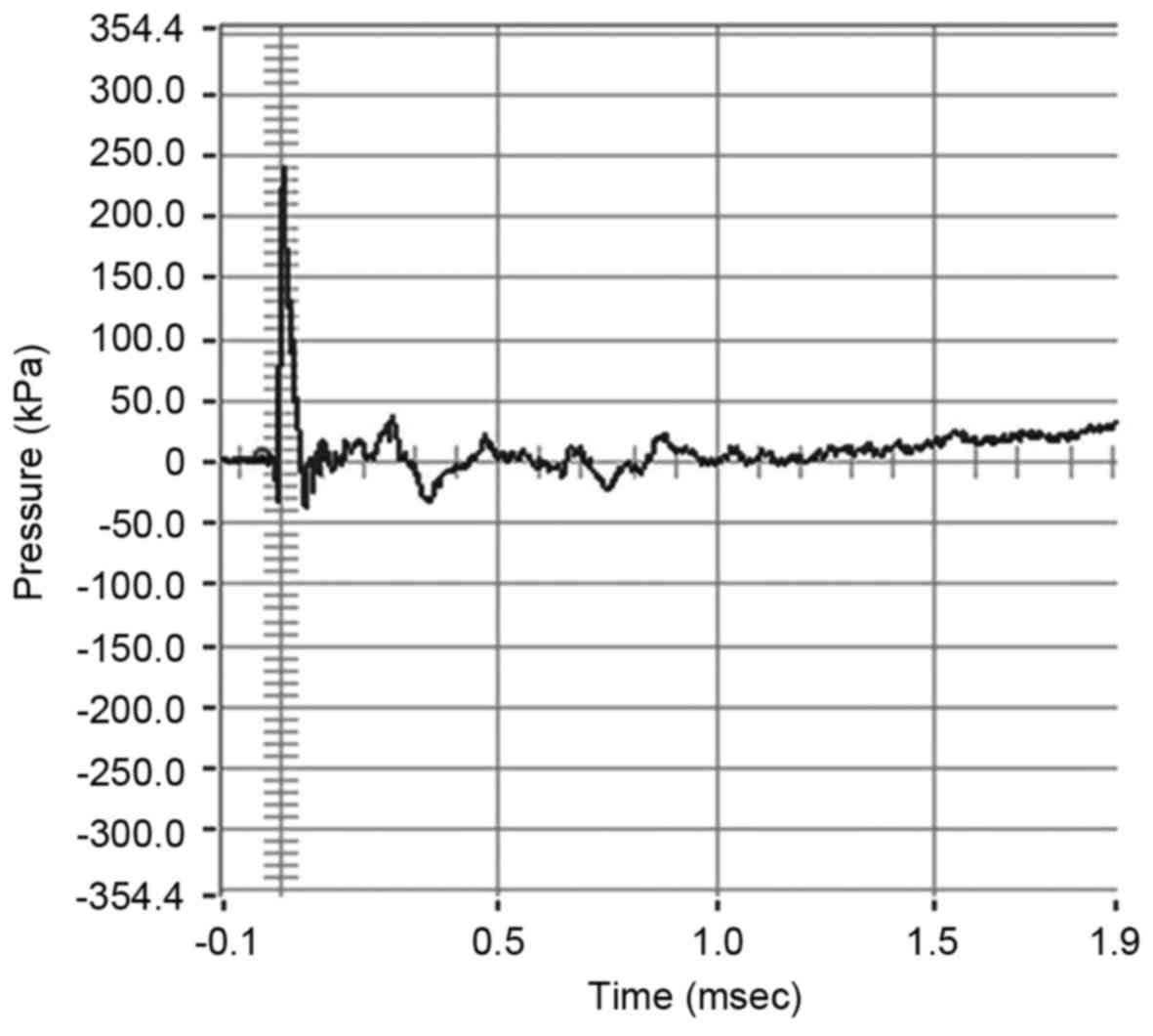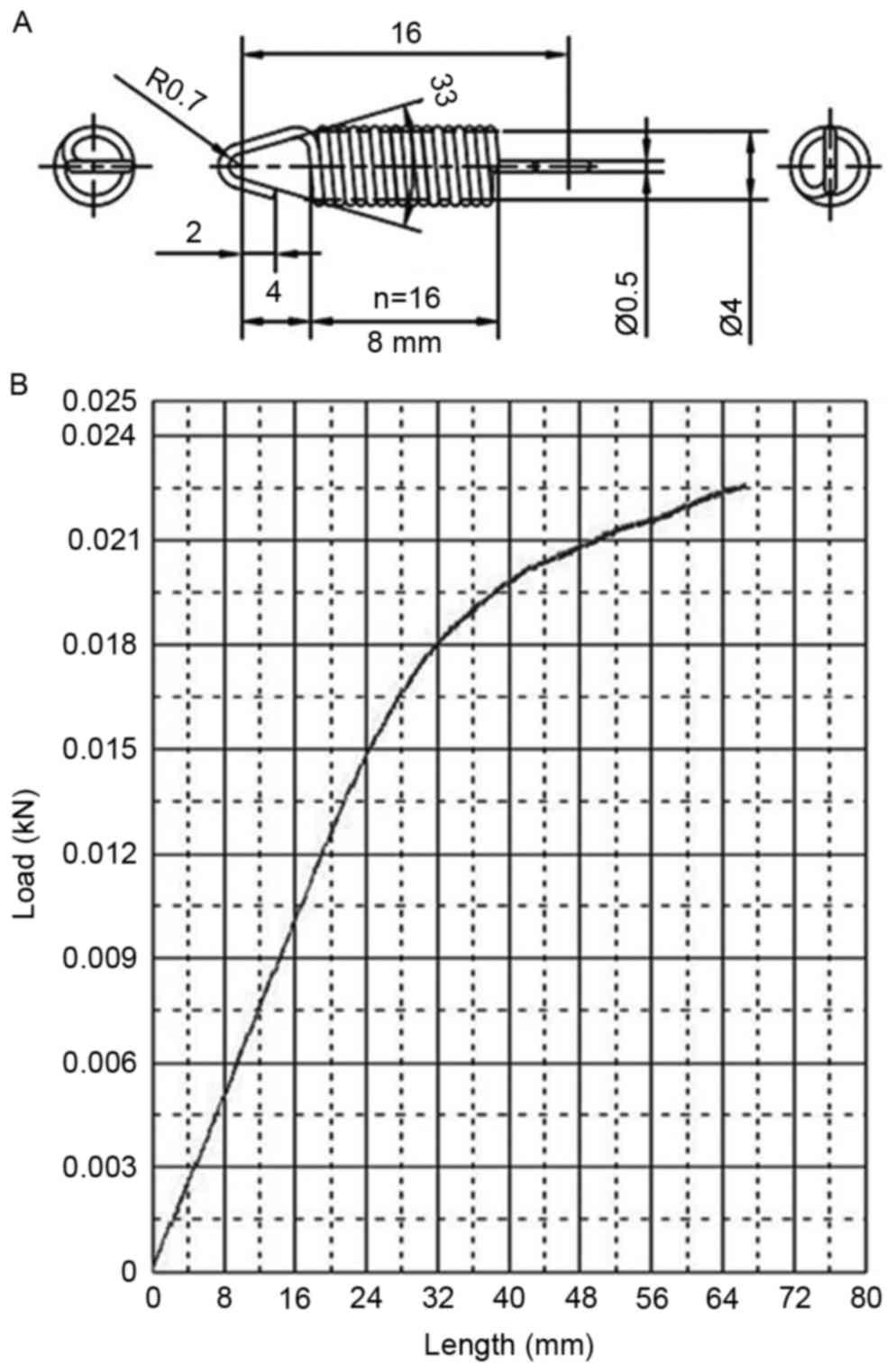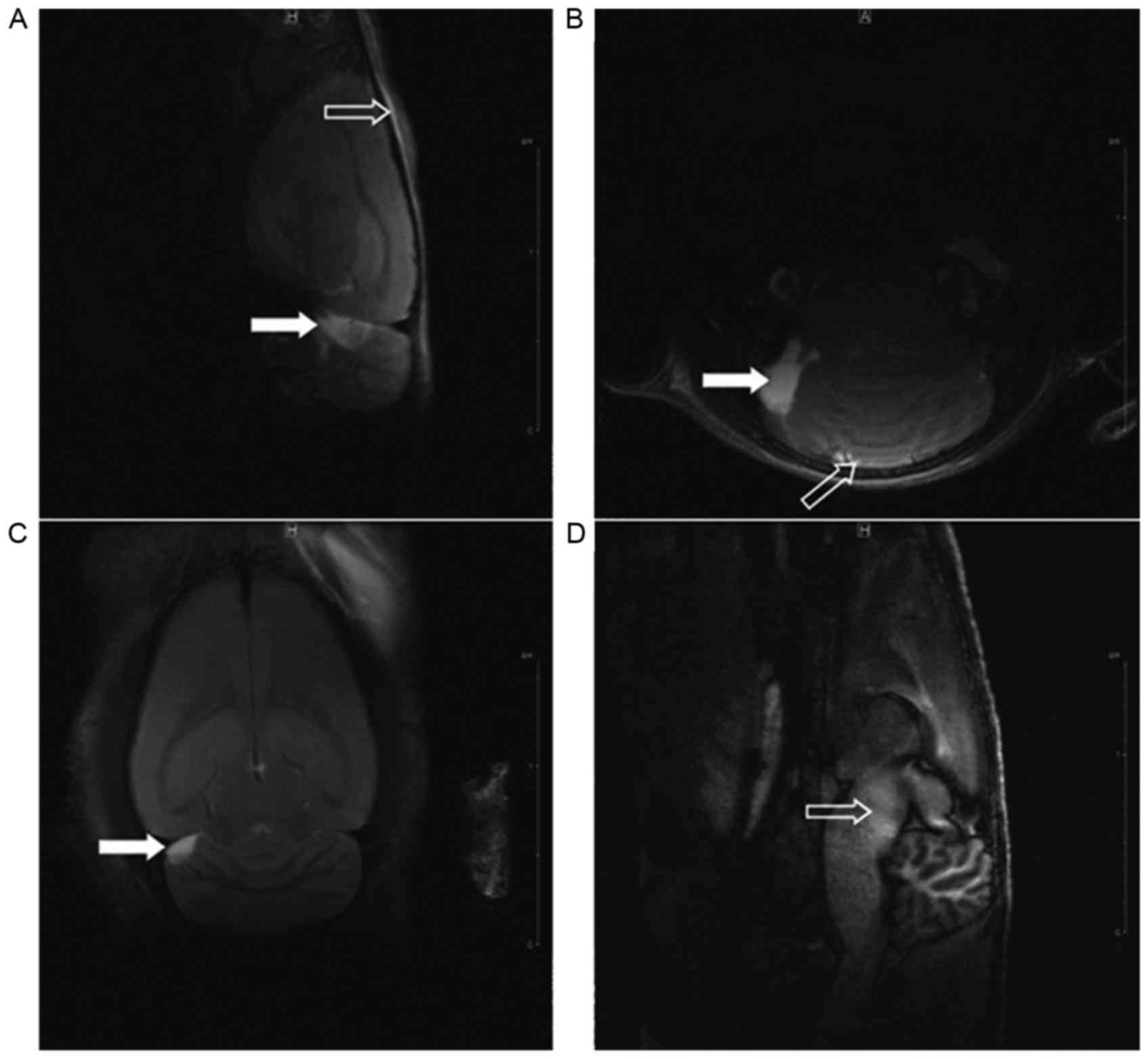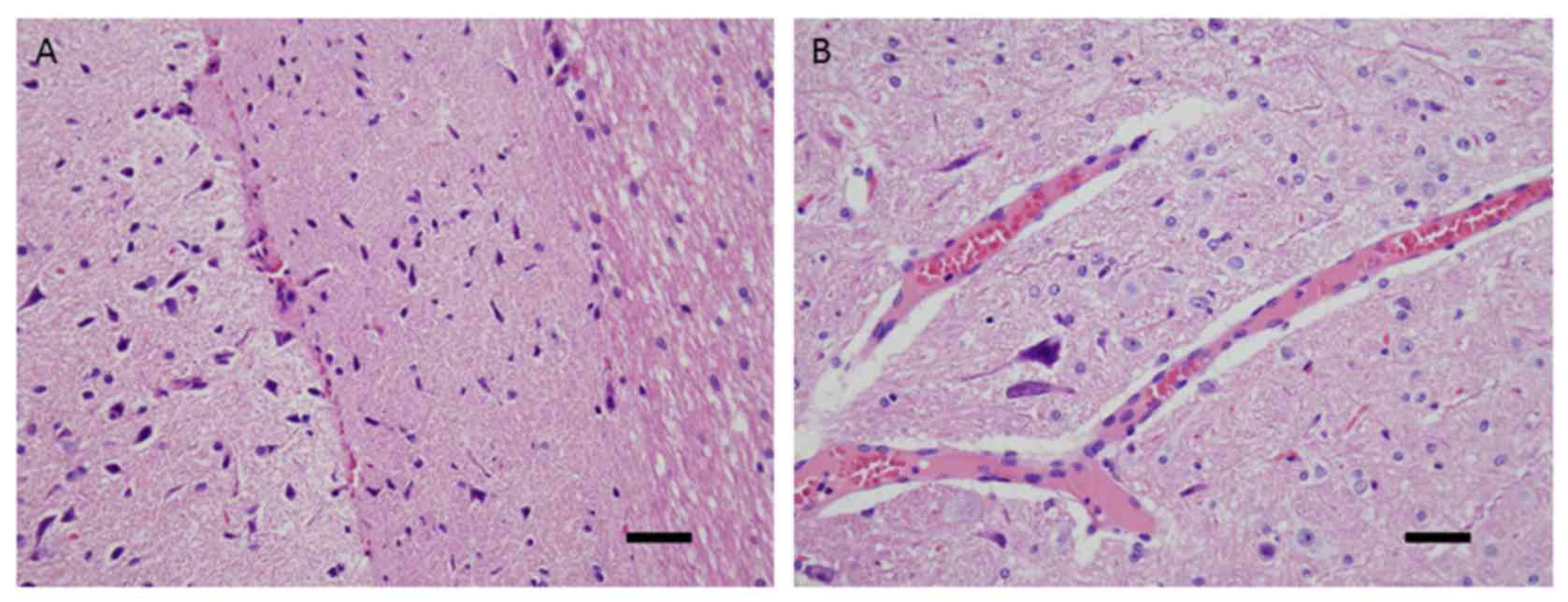|
1
|
Benzinger TL, Brody D, Cardin S, Curley
KC, Mintun MA, Mun SK, Wong KH and Wrathall JR: Blast-related brain
injury: Imaging for clinical and research applications: Report of
the 2008 st. Louis workshop. J Neurotrauma. 26:2127–2144. 2009.
View Article : Google Scholar : PubMed/NCBI
|
|
2
|
Zhao Y and Wang ZG: Blast-induced
traumatic brain injury: A new trend of blast injury research. Chin
J Traumatol. 18:201–203. 2015. View Article : Google Scholar : PubMed/NCBI
|
|
3
|
Heinzelmann M, Reddy SY, French LM, Wang
D, Lee H, Barr T, Baxter T, Mysliwiec V and Gill J: Military
personnel with chronic symptoms following blast traumatic brain
injury have differential expression of neuronal recovery and
epidermal growth factor receptor genes. Front Neurol. 5:1982014.
View Article : Google Scholar : PubMed/NCBI
|
|
4
|
Valiyaveettil M, Alamneh YA, Miller SA,
Hammamieh R, Arun P, Wang Y, Wei Y, Oguntayo S, Long JB and Nambiar
MP: Modulation of cholinergic pathways and inflammatory mediators
in blast-induced traumatic brain injury. Chem Biol Interact.
203:371–375. 2013. View Article : Google Scholar : PubMed/NCBI
|
|
5
|
Courtney A and Courtney M: The complexity
of biomechanics causing primary blast-induced traumatic brain
injury: A review of potential mechanisms. Front Neurol. 6:2212015.
View Article : Google Scholar : PubMed/NCBI
|
|
6
|
Edwards MJ, Lustik M, Carlson T, Tabak B,
Farmer D, Edwards K and Eichelberger M: Surgical interventions for
pediatric blast injury: An analysis from Afghanistan and Iraq 2002
to 2010. J Trauma Acute Care Surg. 76:854–858. 2014. View Article : Google Scholar : PubMed/NCBI
|
|
7
|
Chen YC, Smith DH and Meaney DF: In-vitro
approaches for studying blast-induced traumatic brain injury. J
Neurotrauma. 26:861–876. 2009. View Article : Google Scholar : PubMed/NCBI
|
|
8
|
Wang Y, Wei Y, Oguntayo S, Wilkins W, Arun
P, Valiyaveettil M, Song J, Long JB and Nambiar MP: Tightly coupled
repetitive blast-induced traumatic brain injury: Development and
characterization in mice. J Neurotrauma. 28:2171–2183. 2011.
View Article : Google Scholar : PubMed/NCBI
|
|
9
|
Svetlov SI, Prima V, Kirk DR, Gutierrez H,
Curley KC, Hayes RL and Wang KK: Morphologic and biochemical
characterization of brain injury in a model of controlled blast
overpressure exposure. J Trauma. 69:795–804. 2010. View Article : Google Scholar : PubMed/NCBI
|
|
10
|
Ling G, Bandak F, Armonda R, Grant G and
Ecklund J: Explosive blast neurotrauma. J Neurotrauma. 26:815–825.
2009. View Article : Google Scholar : PubMed/NCBI
|
|
11
|
Risling M, Plantman S, Angeria M, Rostami
E, Bellander BM, Kirkegaard M, Arborelius U and Davidsson J:
Mechanisms of blast induced brain injuries, experimental studies in
rats. Neuroimage. 54 Suppl 1:S89–S97. 2011. View Article : Google Scholar : PubMed/NCBI
|
|
12
|
Bell MK: Standardized model is needed to
study the neurological effects of primary blast wave exposure. Mil
Med. 173:v–viii. 2008.PubMed/NCBI
|
|
13
|
Zhao Y, Zhao Y, Zhang M, Zhao J, Ma X,
Huang T, Pang H, Li J and Song J: Inhibition of TLR4
signalling-induced inflammation attenuates secondary injury after
diffuse axonal injury in rats. Mediators Inflamm. 2016:47069152016.
View Article : Google Scholar : PubMed/NCBI
|
|
14
|
Gennarelli TA, Thibault LE, Tipperman R,
Tomei G, Sergot R, Brown M, Maxwell WL, Graham DI, Adams JH, Irvine
A, et al: Axonal injury in the optic nerve: A model simulating
diffuse axonal injury in the brain. J Neurosurg. 71:244–253. 1989.
View Article : Google Scholar : PubMed/NCBI
|
|
15
|
Dixon CE, Lyeth BG, Povlishock JT,
Findling RL, Hamm RJ, Marmarou A, Young HF and Hayes RL: A fluid
percussion model of experimental brain injury in the rat. J
Neurosurg. 67:110–119. 1987. View Article : Google Scholar : PubMed/NCBI
|
|
16
|
Marmarou A, Foda MA, van den Brink W,
Campbell J, Kita H and Demetriadou K: A new model of diffuse brain
injury in rats. Part I: Pathophysiology and biomechanics. J
Neurosurg. 80:291–300. 1994. View Article : Google Scholar : PubMed/NCBI
|
|
17
|
Wang HC, Duan ZX, Wu FF, Xie L, Zhang H
and Ma YB: A new rat model for diffuse axonal injury using a
combination of linear acceleration and angular acceleration. J
Neurotrauma. 27:707–719. 2010. View Article : Google Scholar : PubMed/NCBI
|
|
18
|
Nishimoto T and Murakami S: Relation
between diffuse axonal injury and internal head structures on blunt
impact. J Biomech Eng. 120:140–147. 1998. View Article : Google Scholar : PubMed/NCBI
|
|
19
|
Garman RH, Jenkins LW, Switzer RC III,
Bauman RA, Tong LC, Swauger PV, Parks SA, Ritzel DV, Dixon CE,
Clark RS, et al: Blast exposure in rats with body shielding is
characterized primarily by diffuse axonal injury. J Neurotrauma.
28:947–959. 2011. View Article : Google Scholar : PubMed/NCBI
|
|
20
|
Säljö A, Bao F, Haglid KG and Hansson HA:
Blast exposure causes redistribution of phosphorylated
neurofilament subunits in neurons of the adult rat brain. J
Neurotrauma. 17:719–726. 2000. View Article : Google Scholar : PubMed/NCBI
|
|
21
|
Xiao-Sheng H, Sheng-Yu Y, Xiang Z, Zhou F
and Jian-ning Z: Diffuse axonal injury due to lateral head rotation
in a rat model. J Neurosurg. 93:626–633. 2000. View Article : Google Scholar : PubMed/NCBI
|
|
22
|
Cheng J, Gu J, Ma Y, Yang T, Kuang Y, Li B
and Kang J: Development of a rat model for studying blast-induced
traumatic brain injury. J Neurol Sci. 294:23–28. 2010. View Article : Google Scholar : PubMed/NCBI
|
|
23
|
Elder GA, Sosa Gama MA, De Gasperi R,
Stone JR, Dickstein DL, Haghighi F, Hof PR and Ahlers ST: Vascular
and inflammatory factors in the pathophysiology of blast-induced
brain injury. Front Neurol. 6:482015. View Article : Google Scholar : PubMed/NCBI
|
|
24
|
Huo J, Liu J, Wang J, Zhang Y, Wang C,
Yang Y, Sun W and Xu S: Early hyperbaric oxygen therapy inhibits
aquaporin 4 and adrenocorticotropic hormone expression in the
pituitary gland of rabbits with blast-induced craniocerebral
injury. Neural Regen Res. 7:1729–1735. 2012.PubMed/NCBI
|
|
25
|
Gennarelli TA, Thibault LE, Adams JH,
Graham DI, Thompson CJ and Marcincin RP: Diffuse axonal injury and
traumatic coma in the primate. Ann Neurol. 12:564–574. 1982.
View Article : Google Scholar : PubMed/NCBI
|
|
26
|
Meythaler JM, Peduzzi JD, Eleftheriou E
and Novack TA: Current concepts: Diffuse axonal injury-associated
traumatic brain injury. Arch Phys Med Rehabil. 82:1461–1471. 2001.
View Article : Google Scholar : PubMed/NCBI
|
|
27
|
Hill CS, Coleman MP and Menon DK:
Traumatic axonal injury: Mechanisms and translational
opportunities. Trends Neurosci. 39:311–324. 2016. View Article : Google Scholar : PubMed/NCBI
|
|
28
|
Siedler DG, Chuah MI, Kirkcaldie MT,
Vickers JC and King AE: Diffuse axonal injury in brain trauma:
Insights from alterations in neurofilaments. Front Cell Neurosci.
8:4292014. View Article : Google Scholar : PubMed/NCBI
|
|
29
|
Fijalkowski RJ, Stemper BD, Pintar FA,
Yoganandan N, Crowe MJ and Gennarelli TA: New rat model for diffuse
brain injury using coronal plane angular acceleration. J
Neurotrauma. 24:1387–1398. 2007. View Article : Google Scholar : PubMed/NCBI
|
|
30
|
Ma J, Zhang K, Wang Z and Chen G: Progress
of research on diffuse axonal injury after traumatic brain injury.
Neural Plast. 2016:97463132016. View Article : Google Scholar : PubMed/NCBI
|
|
31
|
Margulies SS, Thibault LE and Gennarelli
TA: Physical model simulations of brain injury in the primate. J
Biomech. 23:823–836. 1990. View Article : Google Scholar : PubMed/NCBI
|
|
32
|
Maxwell WL, Watt C, Graham DI and
Gennarelli TA: Ultrastructural evidence of axonal shearing as a
result of lateral acceleration of the head in non-human primates.
Acta Neuropathol. 86:136–144. 1993. View Article : Google Scholar : PubMed/NCBI
|















